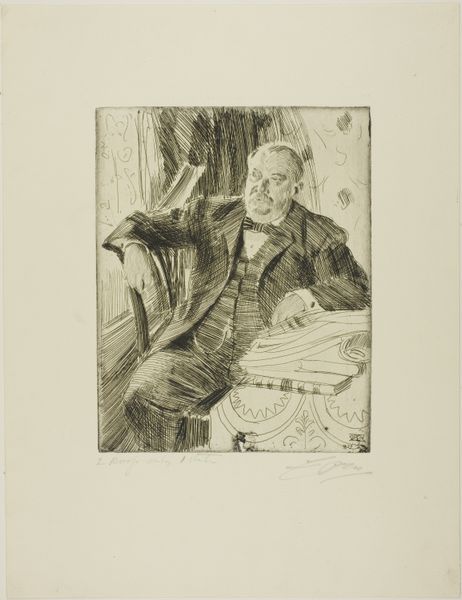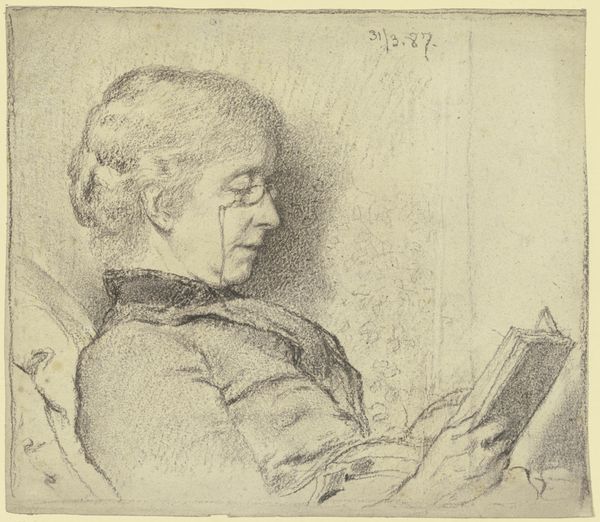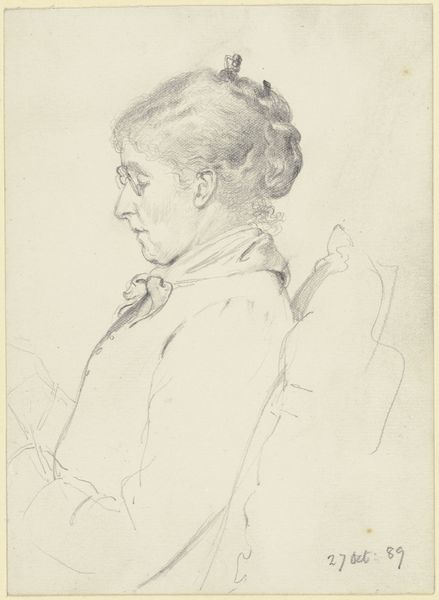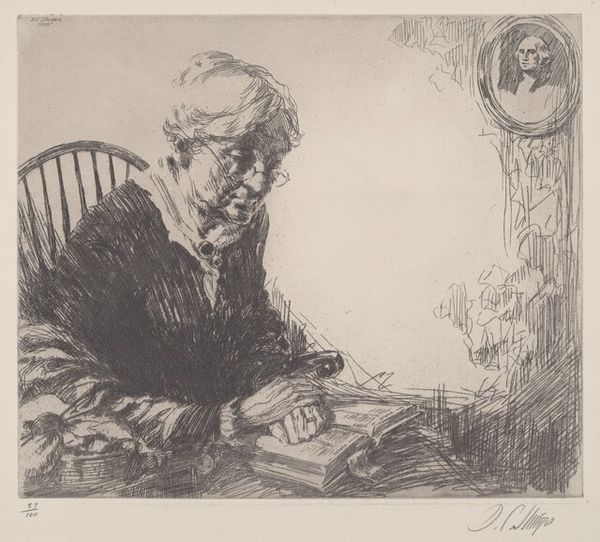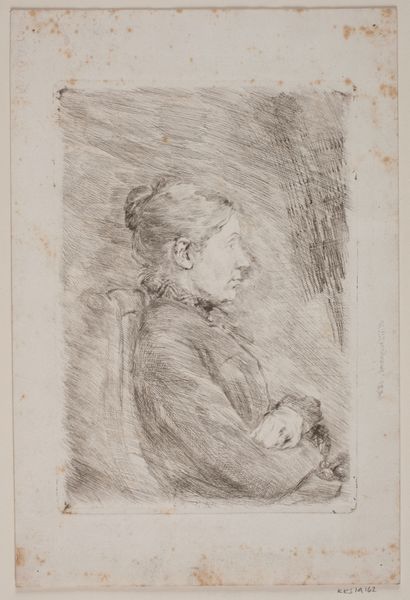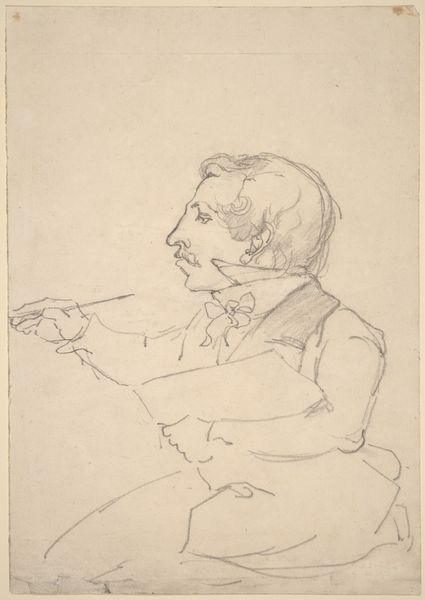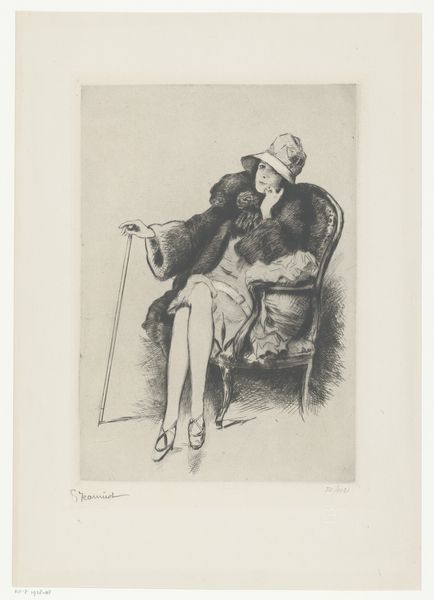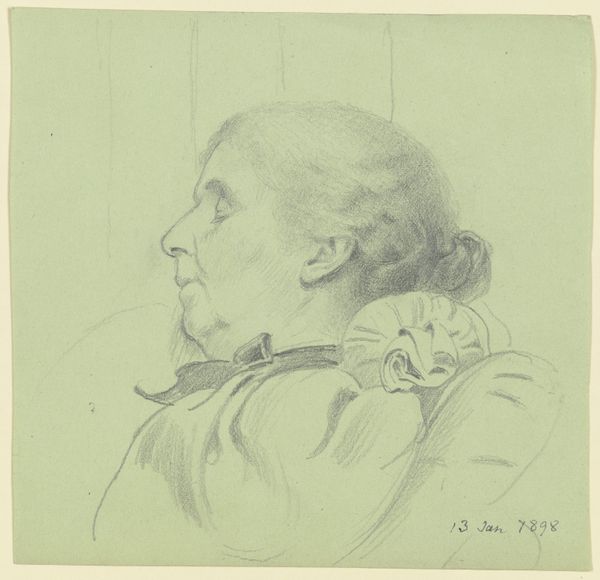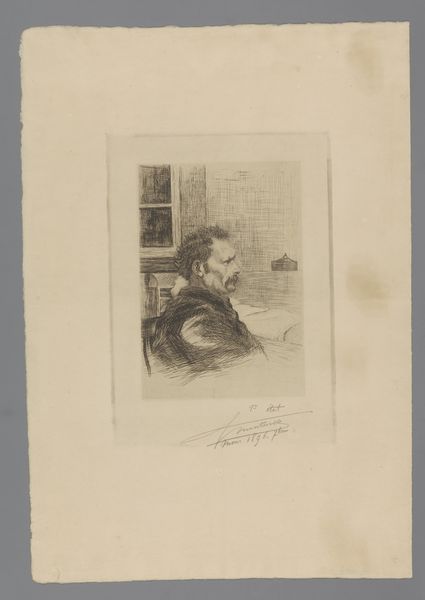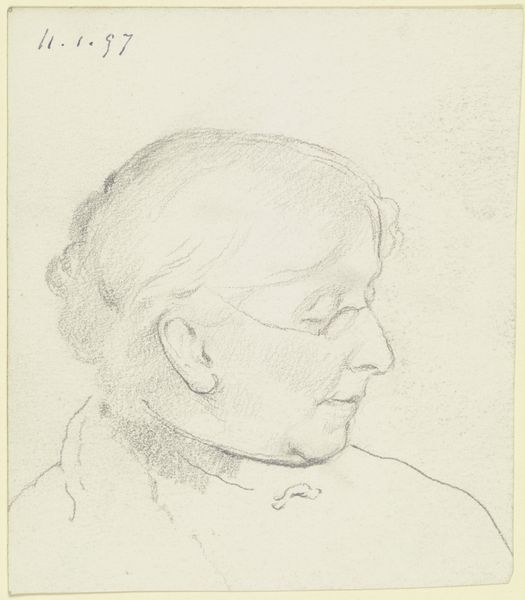
Dimensions: 197 × 274 mm (image/plate); 345 × 440 mm (sheet - folded)
Copyright: Public Domain
Curator: Standing before us is Anders Zorn's etching and drypoint from 1895, titled "Anna Wallenberg." It's currently held at The Art Institute of Chicago. What are your immediate impressions? Editor: A quiet solemnity, almost resignation, emanates from the figure. The limited palette emphasizes the weight of the shadows, the etching seeming to map her world as something etched in time. It also looks very small, perhaps fragile. Curator: That fragility speaks to the delicacy Zorn achieves with the etching technique. But "fragile" may not completely capture it; consider Wallenberg’s status within Swedish society at the time. Here, he captures a bourgeois matriarch of one of Sweden's wealthiest families, ennobling her with dignity. Look at the subtle but present confidence in the slight tilt of her chin. The pattern in the background may symbolize the Wallenberg's rooted wealth. Editor: And yet, despite that apparent ennobling, she seems...contained. Bound, almost. Is it possible this image inadvertently speaks to the constraints placed upon women of her stature? Confined to domestic spaces, her influence limited to family and perhaps charitable endeavors? Zorn emphasizes that restriction via this woman’s physical and, subsequently, cultural enclosure. Curator: Perhaps it speaks less to containment and more to continuity. Observe the recurring motifs Zorn uses for portraying women, from domestic objects like chairs and patterned wallpapers to her posture; it's an image imbued with bourgeois stability and continuity. But I understand your reading, situating this portrait in a potentially restrictive historical context. Editor: Exactly, by acknowledging these power dynamics, we confront the biases embedded within seemingly benign representations, seeing these historical portraits not merely as representations of wealthy people, but as documents of power relations in a patriarchal society. The image thus can embody both strength, through her family’s name, and subjugation. Curator: An important consideration, indeed. I see now what the etched mapping could suggest— not just how she is fixed within her setting but in cultural consciousness more generally. Editor: Absolutely, this perspective is essential in analyzing visual legacies of social injustice. Thank you for adding clarity about the possible intent of her physical depiction, it now suggests that strength and confinement coexist simultaneously.
Comments
No comments
Be the first to comment and join the conversation on the ultimate creative platform.
